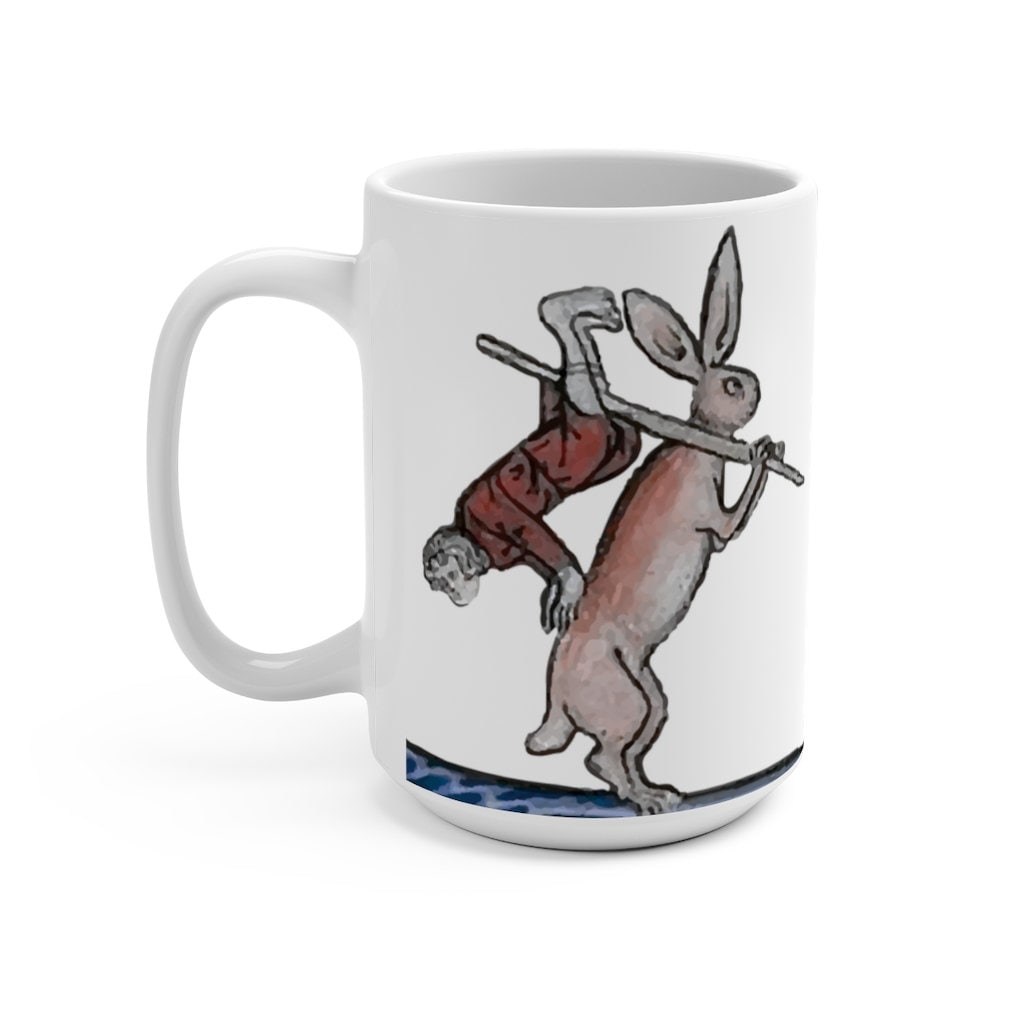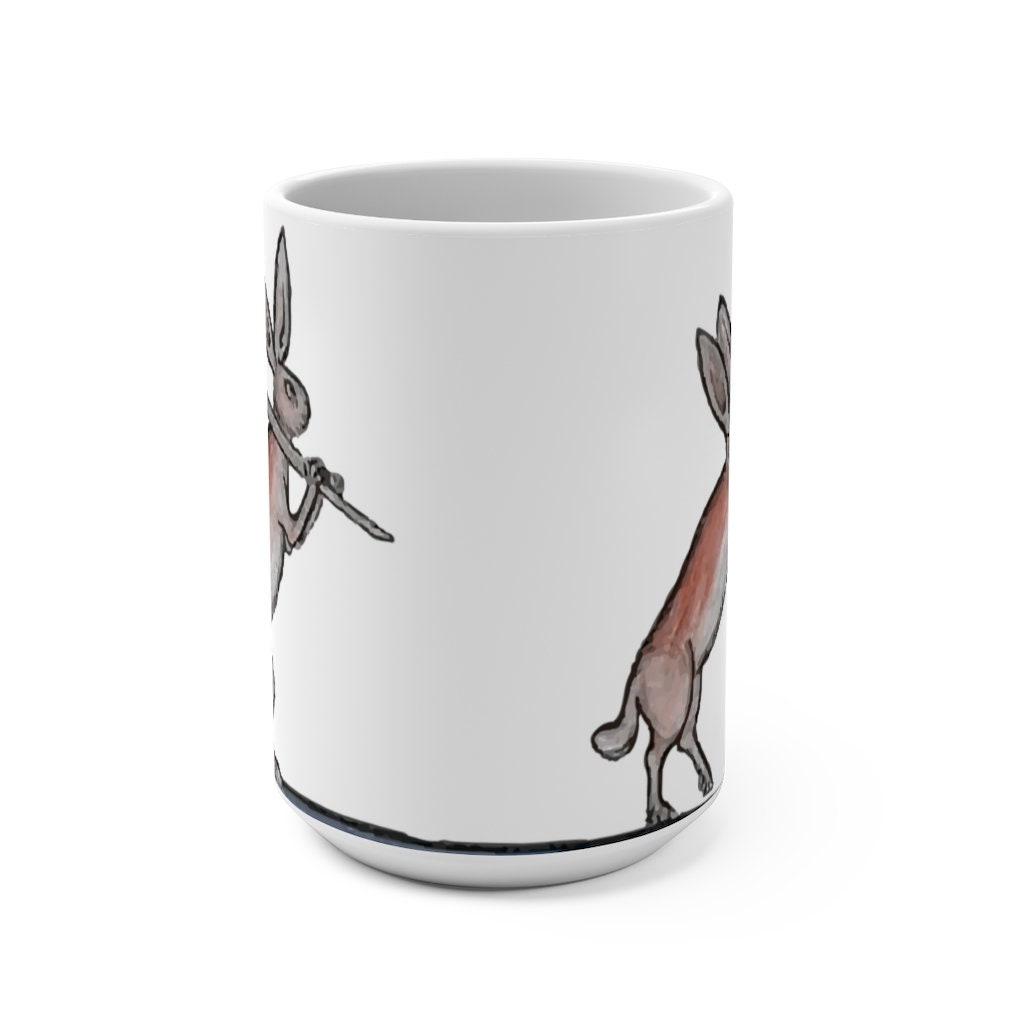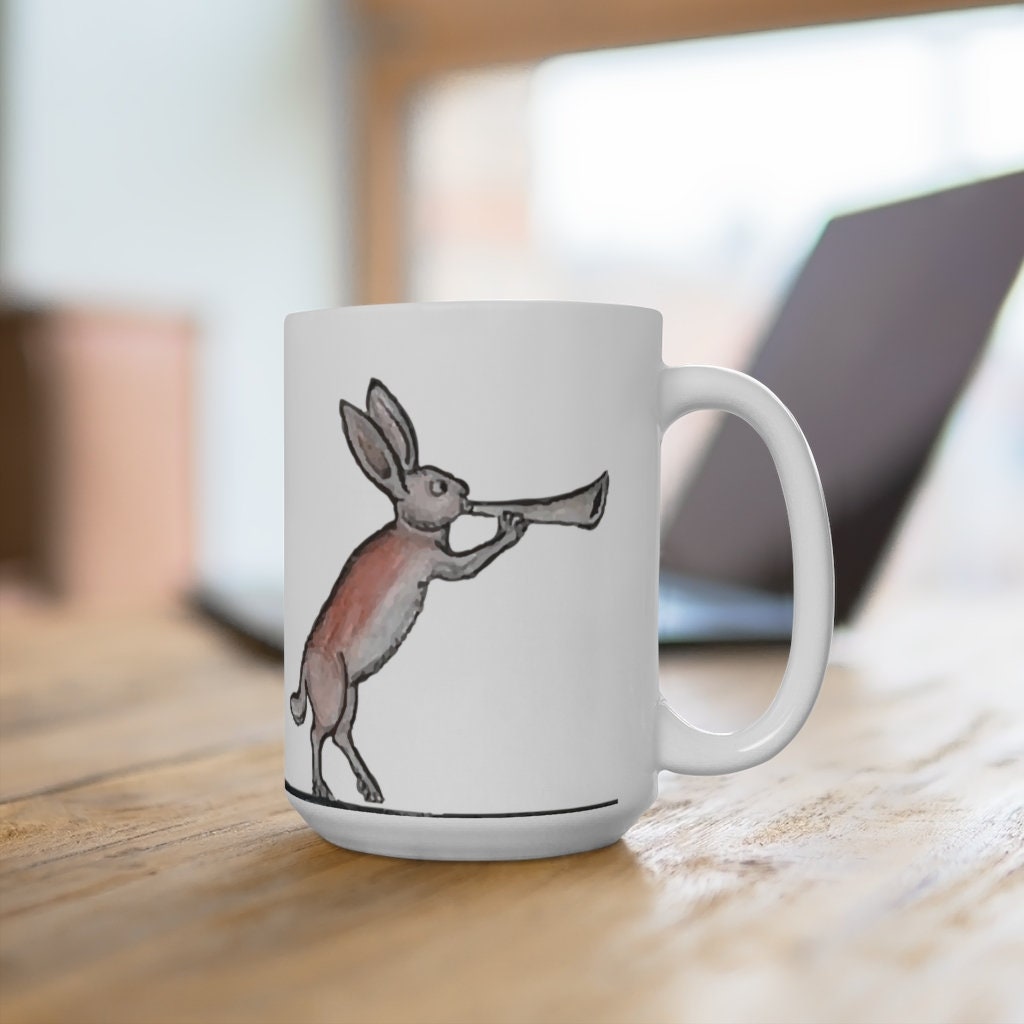Medieval Hunter Rabbit White 15oz Ceramic Mug, From Medieval Manuscript, Marginalia, Coffee, Tea
$23.00
Design is from the marginalia of a medieval manuscript. It shows a rabbit carrying a man tied to a stick, hanging upside down, that he successfully hunted. Another rabbit proceeds him blowing a trumpet. On a white mug.
Marginalia refers to the notes, comments, or annotations made in the margins of a book, document, or manuscript. These additional remarks are typically written by readers or scholars to provide insights, explanations, or reflections on the main text.
Marginalia can take various forms, including underlining or highlighting important passages, inserting comments or questions, drawing symbols or doodles, or even engaging in a dialogue with the author or previous readers. It serves as a way for individuals to interact with the text, express their thoughts, and engage in a deeper level of understanding.
Medieval killer rabbit marginalia refers to a specific type of marginalia found in medieval manuscripts that depicts a rabbit engaging in violent or aggressive behavior. These illustrations often portray rabbits as fearsome creatures attacking humans, knights, or other animals.
These marginalia are known for their whimsical and sometimes absurd nature, contrasting with the seriousness of the surrounding text. The rabbit, typically depicted with fangs, claws, or weapons, showcases a playful and humorous twist on the natural world.
Medieval Killer Rabbit Series: https://www.vintageartwork.com/search?q=medieval+rabbit
There's never too much coffee! Bigger size white, durable ceramic mug. High quality sublimation printing makes it an appreciated gift to every true coffee or tea lover, who always asks for a refill.
.: White ceramic
.: 15 oz (0.44 l)
.: Rounded corners
.: Dishwasher & microwave safe
.: C-handle
Shipping from United States
Processing time
3-10 business days
Customs and import taxes
Buyers are responsible for any customs and import taxes that may apply. I'm not responsible for delays due to customs.
Payment Options
Returns & Exchanges
I gladly accept returns and exchanges
Just contact me within: 14 days of delivery
Ship items back to me within: 30 days of delivery
I don't accept cancellations
But please contact me if you have any problems with your order.
The following items can't be returned or exchanged
Because of the nature of these items, unless they arrive damaged or defective, I can't accept returns for:
- Custom or personalized orders
- Perishable products (like food or flowers)
- Digital downloads
- Intimate items (for health/hygiene reasons)
Conditions of return
Buyers are responsible for return shipping costs. If the item is not returned in its original condition, the buyer is responsible for any loss in value.
Frequently Asked Questions
What is All-Over-Print (AOP)?
All-Over Print (AOP) is a printing method that uses dye-sublimation to print a design onto polyester. During the dye sublimation process the dye is absorbed into the fabric. Since, it is not printed on the surface, like most t-shirts, it provides for a fantastic soft-to-the-touch feel and superior breathability.
AOP is a more time consuming method than screen printing or direct-to-garment (DTG) printing, so the prices are higher and the production times are longer, but the results are most definitely worth it.
Advantages of AOP:
The design won't peel off, unlike typical screen printing.
The design is part of the fabric of the item, so it will last as long as the item does.
The intensity of color is often unmatched.
What is Giclée?
Giclée (pronounced zhee-CLAY or often gee-CLAY) is a printing process that creates a museum quality, archival print. Special acid-free, paper is printed with fade resistant ink using a state-of-the-art, large format inkjet printer.
What is a gallery wrap canvas?
Gallery wrap is a style of displaying a canvas that doesn't show any visible staples or nails holding the fabric to the wooden stretcher bars. This style of canvas is intended to be hung unframed.
What is a gallery mirror wrap canvas?
Mirrored edges (mirror wrap) is used to show the whole image on the main surface, rather than printing the edges of the image on the sides (image wrap) of the canvas frame. It is usually used when there is necessary detail on the edges of the image. Image wrap is used when the focal point of the image is in the center.



